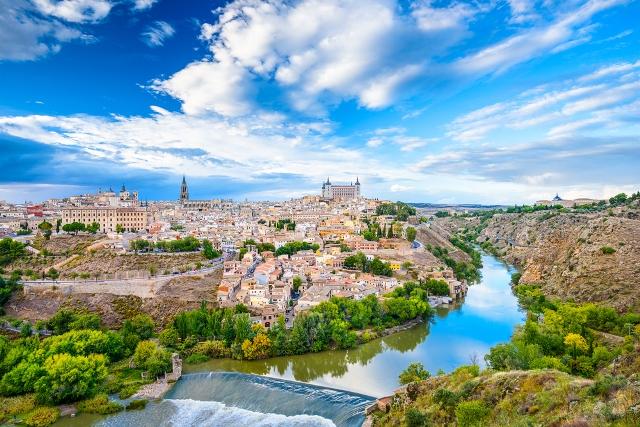
Discover the rich cultural and natural heritage of Spain through its stunning UNESCO-listed sites. From ancient Roman ruins to stunning Moorish palaces and unique modern architecture, Spain's World Heritage Sites offer a fascinating journey through the country's history and diverse landscapes.
This breathtaking complex of palaces, gardens, and fortresses in Granada showcases the exquisite architecture and artistry of the Nasrid dynasty. The Alhambra and Generalife are prime examples of Moorish architecture, while the Albayzín district represents the medieval Moorish town.
The Monuments of Oviedo and the Kingdom of the Asturias are a group of pre-Romanesque buildings and structures in the region of Asturias, Spain. These monuments date back to the 9th and 10th centuries during the reign of the Kingdom of Asturias. They represent some of the earliest examples of Christian architecture on the Iberian Peninsula
Once the capital of Spain, Toledo is a melting pot of Christian, Muslim, and Jewish cultures. Its narrow streets, historic bridges, and impressive cathedral make it a fascinating destination for history buffs.
In addition to the Sagrada Família, Gaudí's unique architectural style can be seen in various other buildings in Barcelona, such as Park Güell, Casa Batlló, and Casa Milà. The Colonia Güell Crypt, located just outside Barcelona, is also part of this UNESCO site.
The historic city of Santiago de Compostela is the final destination for pilgrims on the Camino de Santiago. Its impressive cathedral, Romanesque architecture, and narrow streets make it a truly unique site.
Salamanca is home to one of the oldest universities in Europe, and its historic city center is a stunning display of Renaissance, Baroque, and Gothic architecture.
This ancient Roman gold mining site in the region of León offers a glimpse into the engineering prowess of the Roman Empire. The unique landscape, with its red-hued soil and terraces, is a testament to the scale of the mining operations.
This vast wetland reserve in Andalusia is a haven for migratory birds and endangered species. Its diverse ecosystems, including marshes, lagoons, and sand dunes, make it a unique natural site.
This Gothic-style building in Valencia, once a silk exchange, is an exceptional example of European secular architecture from the late Middle Ages.
Known as the "Sistine Chapel of Paleolithic Art," the Altamira Cave is home to some of the world's most impressive prehistoric cave paintings, dating back around 15,000 years.
These are just a few of the many UNESCO World Heritage Sites in Spain, each offering a unique glimpse into the country's rich history, culture, and natural beauty. Whether you're a history enthusiast, architecture lover, or nature explorer, Spain's World Heritage Sites are sure to leave you in awe.